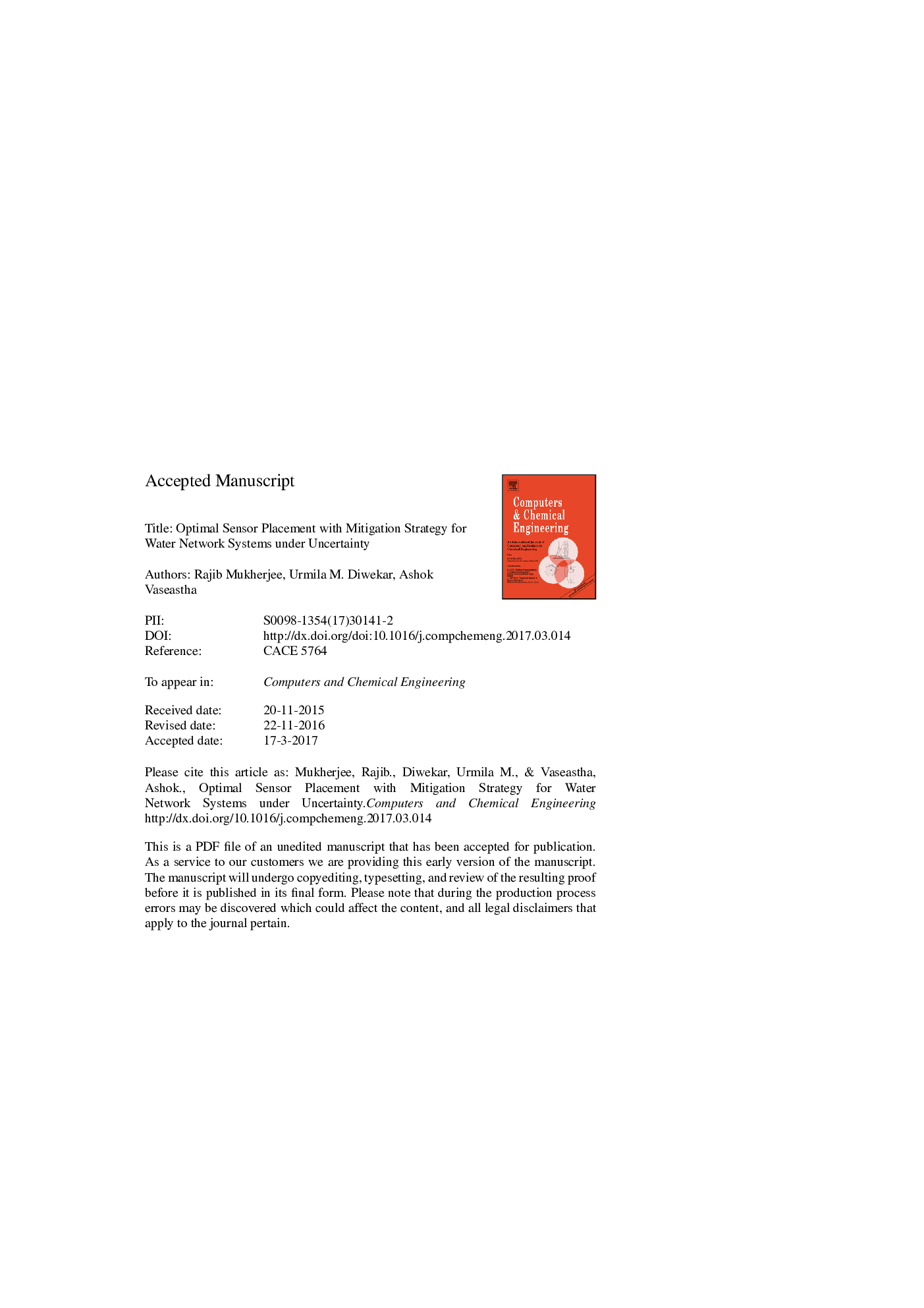| کد مقاله | کد نشریه | سال انتشار | مقاله انگلیسی | نسخه تمام متن |
|---|---|---|---|---|
| 4764593 | 1423741 | 2017 | 46 صفحه PDF | دانلود رایگان |
عنوان انگلیسی مقاله ISI
Optimal sensor placement with mitigation strategy for water network systems under uncertainty
ترجمه فارسی عنوان
قرار دادن سنسور بهینه با استراتژی کاهش سیستم های شبکه آب تحت عدم اطمینان
دانلود مقاله + سفارش ترجمه
دانلود مقاله ISI انگلیسی
رایگان برای ایرانیان
کلمات کلیدی
قرار دادن سنسور، شبکه آب بهینه سازی تصادفی، ارزیابی اثرات، اصل عدم اطمینان،
موضوعات مرتبط
مهندسی و علوم پایه
مهندسی شیمی
مهندسی شیمی (عمومی)
چکیده انگلیسی
Contamination of water in a distributed water network can cause serious public health disaster. The contamination can occur at one part of the network and may spread to different region depending of the flow pattern of water. It is essential to monitor contamination using distributed water networks and a practical way to do so, is through the application of sensor networks. Sensors are used for timely detection of the presence of various contaminants in water. To accurately and optimally map the contamination distribution, it is quintessential to place sensors in optimal positions in the network whereby the goal is to minimize the net effect from contamination - inadvertent or intentional. The demand of water at different locations in the network can be uncertain leading to various flow patterns. The location of contamination within the network can also be uncertain. With these uncertainties, the propagation of the contaminant in the network varies accordingly, thus affecting the impact from contamination. An optimal placement of the sensors should account for these uncertainties. A mitigation response of contamination, as detected by a sensor network is manifested in a decreased demand due to public information as a function of distance from the sensor. The overall impact from contamination is estimated by including impacts, as found in the downstream of the sensor in the network. In this work, the most efficient network of sensors is designed by including demand and location uncertainty as well as response from downstream from the sensor. The problem is solved by formulating a nonlinear, stochastic mixed integer problem. Generally stochastic formulation requires repeated function calculations. In our research, a reweighting approach is used instead of repeated function simulation to estimate an expected value of the impact. The reweighting scheme along with a novel sampling technique has been implemented through a Better Optimization algorithm for Nonlinear Uncertain Systems (BONUS). The results are compared with that from TEVA SPOT, which neither takes into account demand uncertainty nor downstream response from the source of contamination (attack). Inclusion of downstream response and demand uncertainty on optimal sensor placement in water network systems show better sensor layouts with minimum impacts from contamination.
ناشر
Database: Elsevier - ScienceDirect (ساینس دایرکت)
Journal: Computers & Chemical Engineering - Volume 103, 4 August 2017, Pages 91-102
Journal: Computers & Chemical Engineering - Volume 103, 4 August 2017, Pages 91-102
نویسندگان
Rajib Mukherjee, Urmila M. Diwekar, Ashok Vaseashta,
